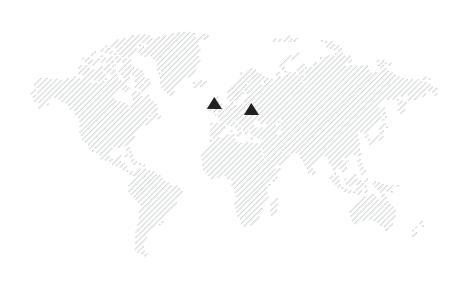In some remote printing houses, you can still find silver-blue-coloured gatherers and folding machines with the logo of the manufacturing plant – LBW Polygraph.
What kind of manufacturer is this? Many young printers no longer know what this company is. But only a third of a century ago, both large printing plants and small reprographic sites throughout Eastern Europe were equipped mainly only with this equipment.
The history of this enterprise shows how unstable the socialist planned economy was. Large companies in East Germany, which had employed tens of thousands of people in the 1980s, were suddenly no longer needed, and the company’s divisions were privatised and resold to successful machine manufacturers in West Germany.
The old models of equipment from the socialist times were not characterised by high reliability. They were no longer of interest to the market in the 90s. But something new always grows on the wreckage of the old. What? Let’s find out.
How the printing industry was organised in the socialist group countries
The Second World War seriously redrew the borders of Europe. As a result, Europe was divided into two camps. Many people are not aware of this fact that in the GDR, Czechoslovakia and the USSR itself the production of printing equipment was also very well developed.
The two worlds – Western and Eastern Europe – were actively competing with each other. The Communists strove hard to show the advantages of the socialist system. East Germany even had its own analogue of the DRUPA exhibition – the Leipzig Printing Exhibition, where new products intended for export were actively exhibited. And of course, the most promising pieces of equipment received state prizes.

In turn, in India, under the licence of the plants from the socialist countries, roll-fed and sheet-fed printing machines were produced. RO-62 and Indian ADAST Dominant 700 series machines are still in operation in different countries of the world. ‘Planeta’ printing machines were spread all over the world.
The main difference between engineering in the Eastern Bloc countries is that there was no private business. Where it did exist, as in Poland, it was very limited in its possibilities. That is why all the printing machines produced in these countries until the collapse of the Soviet Union were oriented either to state-owned factories or to research institutes where documentation had to be reproduced.
We could say that LBW Polygraph is the father of many modern printing and postpress machines. At one time I myself have been searching for information about the history of this plant for a long time. Today I am ready to share it with you.
Polygraph Verner Lamberz
In the socialist part of Germany, due to the introduction and gradual development of the socialist planned economy, large associations – Vereinigung Volkseigener Betriebe (VVB) – began to form in the Soviet occupation zone and then throughout the GDR.

After the reorganisation of one of the VVBs in 1970, the Polygraph Werner Lamberts Combine became one of the leading industrial combines in the GDR. The head office and management headquarters was located in Leipzig. In 1979 it was named in honour of the late SED Politburo member Werner Lambertz. The combine was directly subordinate to the Ministry of Tooling and Machining Equipment.
It comprised eight state-owned companies with more than 40 production units in the paper-processing machinery sector throughout the GDR. The total number of employees was about 16,000.
The parent company of the company was VEB Leipziger Buchbindereimaschinenwerke (LBW), formed in 1960 by the merger of the two companies. There are:
VEB Buchbindereimaschinenwerk Leipzig (formerly Karl Krause),
VEB Falz- und Heftmaschinenwerk Leipzig (formerly Gebrüder Brehmer).
This company was the main supplier of postpress equipment to Eastern Europe.
Other important companies were:
VEB Planeta Radebeul, which produced large format sheetfed offset printing machines,
VEB Plamag Plauen, a company that specialised in web printing machines
VEB Kama (carton machines) Dresden, well known until now for its unbreakable die cutters like famous TS-96 and folding-gluing lines,
VEB Druckmaschinenwerke Leipzig, another factory that produced letterpress equipment, flexographic printing machines, but is especially remembered for its Zircon roller machines.
In addition, the mill had a foreign trade company , Polygraph Export GmbH. It was located in Berlin and was responsible for the mill’s goods. The machines produced by the GDR were really not bad. According to Wikipedia, in the 1980s about 50% of shopping bags in the US were printed on Polygraph machines.
The fate of the company after the reunification of Germany
After reunification in 1990, the mill was dissolved and the individual companies privatised. The most important companies were taken over by West German industrial leaders. For example, the former main plant became the Leipzig site of Heidelberger Druckmaschinen AG until its final closure in May 2015, Plamag Maschinenbau Plauen was bought by MAN Roland Group and Planeta Radebeul became part of Koenig & Bauer AG Würzburg.
KAMA, which manufactures punching presses and folding and gluing lines, has miraculously remained afloat. It is doing quite well, and their equipment can compete with Chinese equipment in terms of cost even today.


